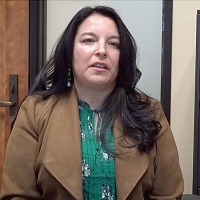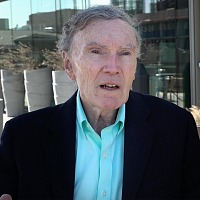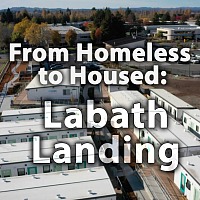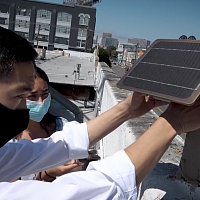 (September 14, 2009)
(September 14, 2009)
Another voice in support of public healthcare reform is coming from family practice residents in Santa Rosa.
 America's current health care system is deeply flawed in its capacity to deliver care to the patients who need it, says Dr. Rachel Friedman (left), which is the fundamental reason she is advocating for systemic reforms.
America's current health care system is deeply flawed in its capacity to deliver care to the patients who need it, says Dr. Rachel Friedman (left), which is the fundamental reason she is advocating for systemic reforms.
 Those inequities in care, which are driven by disparities in health insurance coverage, tend to give doctors a narrower range of patients to work with, observes Dr. Veronica Jordan (right), while her ideal would be to see a more fully representative spectrum of people in her daily practrice.
Those inequities in care, which are driven by disparities in health insurance coverage, tend to give doctors a narrower range of patients to work with, observes Dr. Veronica Jordan (right), while her ideal would be to see a more fully representative spectrum of people in her daily practrice.
The activism that Drs. Friedman and Jordan are engaged in is not unusual, Friedman adds. Most of their residency classmates have joined in, and they have many counterparts across the country.

(May 13, 2009)
Using a new technique, this year's census of the homeless in Sonoma County found far more of them than prior surveys. But improved methodology is being cited as the reason for the higher count, rather than a surge in the homeless population.
{mp3remote}http://media.krcb.org/audio/nbr/5-13-09.mp3{/mp3remote}
In the 2007 Homeless Census, explains Jenny Helbraun Abramson, the process depended on inviting homeless people into community centers to be counted. This time, the outreach was more direct and more comprehensive.
{mp3remote}http://media.krcb.org/audio/nbr/methods.mp3{/mp3remote}
Or go here for a history of the homeless counts in Sonoma County.
(November 13, 2008)
Mixed news on the health care front: stem cell research is spurring advances in what's being called regenerative medicine, but California's budget crisis threatens the ability of community clinics to provide many basic services.
{mp3remote}http://media.krcb.org/audio/nbr/11-13-08.mp3{/mp3remote}

Dr. David Greenberg, Vice President of Special Research Projects for the Buck Institute for Age Research in Novato.
In addition to embryonic stem cells, Dr. Greenberg says current research is also studying adult stem cells.
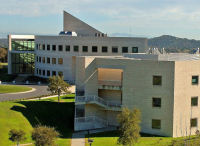
{mp3remote}http://media.krcb.org/audio/nbr/adult.mp3{/mp3remote}
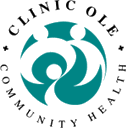 Beatrice Bostick, Executive Director of Clinic Ole in Napa County warns that reducing health care coverage through Medi-Cal will inevitably result in greater demands for hospital emergency rooms, with no funds available for that care.
Beatrice Bostick, Executive Director of Clinic Ole in Napa County warns that reducing health care coverage through Medi-Cal will inevitably result in greater demands for hospital emergency rooms, with no funds available for that care.
{mp3remote}http://media.krcb.org/audio/nbr/er.mp3{/mp3remote}
stem cells
(August 13, 2008)
How do you improve the health of a whole county? That’s the challenge that Sonoma Health Action is tackling.
{mp3remote}http://media.krcb.org/audio/nbr/8-13-08.mp3{/mp3remote}
 The number of uninsured in Sonoma County is estimated at over 42,000 and growing. Physicians continue to leave the community and specialists are in short supply. District hospitals are struggling financially as the competitive pressures of a rapidly changing health care marketplace continue to threaten and destabilize an already broken health care system.
The number of uninsured in Sonoma County is estimated at over 42,000 and growing. Physicians continue to leave the community and specialists are in short supply. District hospitals are struggling financially as the competitive pressures of a rapidly changing health care marketplace continue to threaten and destabilize an already broken health care system.
 Sonoma County is not alone in experiencing the impacts of the health care situation. Communities throughout the state have come together seeking solutions at the local level. On August 14, 2007, the Sonoma County Board of Supervisors authorized the Department of Health Services to convene a health action council to work on improving health and health care for all Sonoma County residents.
Sonoma County is not alone in experiencing the impacts of the health care situation. Communities throughout the state have come together seeking solutions at the local level. On August 14, 2007, the Sonoma County Board of Supervisors authorized the Department of Health Services to convene a health action council to work on improving health and health care for all Sonoma County residents.
Visit their website here .
To take the Health Action Survey, click here .
There's a schedule of upcoming public meetings hosted by Health Action here (pdf).

(June 26, 2008)
If the American health care delivery system we have today is broken – and a great many people think it is – what would a good, functional system look like? And how would we get there from here? E.J. Neil, co-chair of the North Sonoma County Health Care District, which operates the Community Hospital in Healdsburg, shares some thoughts, both on today's North Bay Report , and as part of a lively panel conversation to be held at the Raven Theater on June 26th .

 Live Radio
Live Radio



